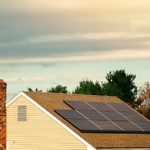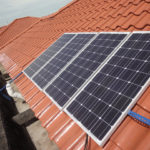You might be surprised to hear just how much waste is produced during the construction process. Even for a smaller home, your construction crew could potentially release a huge volume of toxins into the air and contaminate the local environment. If you are getting ready to break ground, then take a look at these four tips for reducing your carbon footprint during construction.
Focus On The Location
Determining the location of your new home is probably the most important step in this process. While building deep within a city is not always ideal, those who buy property far off the beaten path will drastically increase the amount of fuel it takes to transport supplies. Whenever possible, you want to build on a piece of property that is relatively close to the materials you need. You should also research local water sources to make sure that your construction will not contaminate creeks, rivers, and underground aquifers.
Consider Recycled Materials
Not only are recycled materials very trendy right now, but they are also much better for the environment. Many construction companies and contractors sell their leftovers at just a fraction of their original price, and you will be saving those materials from going to the dump. When buying these supplies, you should double-check to see if they have been manufactured with any toxic chemicals. Materials such as construction-grade lumber and pipes are often treated with hazardous compounds to increase their longevity.
Green Insulation
Insulating your new home is one of the best ways to reduce your energy consumption, but you don’t need to stop there. Many older insulation pads and rolls are made with petroleum-based chemicals, and they can wreak havoc on the local environment during the installation process. Modern polymer sprays, like those offered at SPRAY FOAM DISTRIBUTORS, provide homeowners with the same amount of insulation, but they are produced with sustainable materials that will not release additional toxins into the air.
Request LEED Certification
The U.S. Green Building Council’s LEED program is designed to exhaustively test new buildings to ensure that meet the strictest standards for sustainable construction. In order for your home to be certified, a third-party inspector will need to follow every step of the construction process starting on the very first day. In addition to being better for the environment, this certification could significantly increase the value of your home as well.
Green building methods are going to promote biodiversity while protecting the local ecosystems. Many of these alterations will also provide you with long-term savings to keep your energy consumption and utility bills as low as possible over the years.







![How To Heat An Old Home With Modern Technology [infographic]](https://www.bruzzesehomeimprovements.com/wp-content/uploads/2016/03/infographic-modern-technology-to-warm-an-old-home-150x150.jpg)